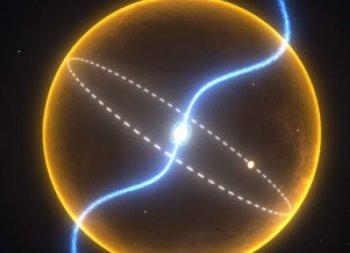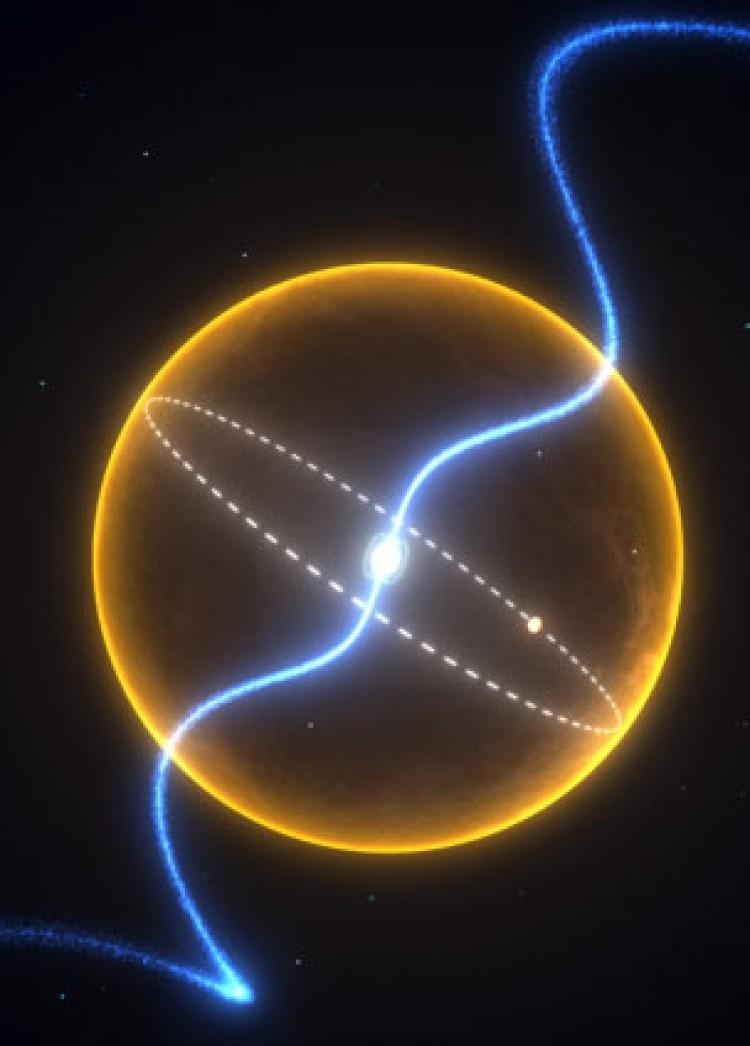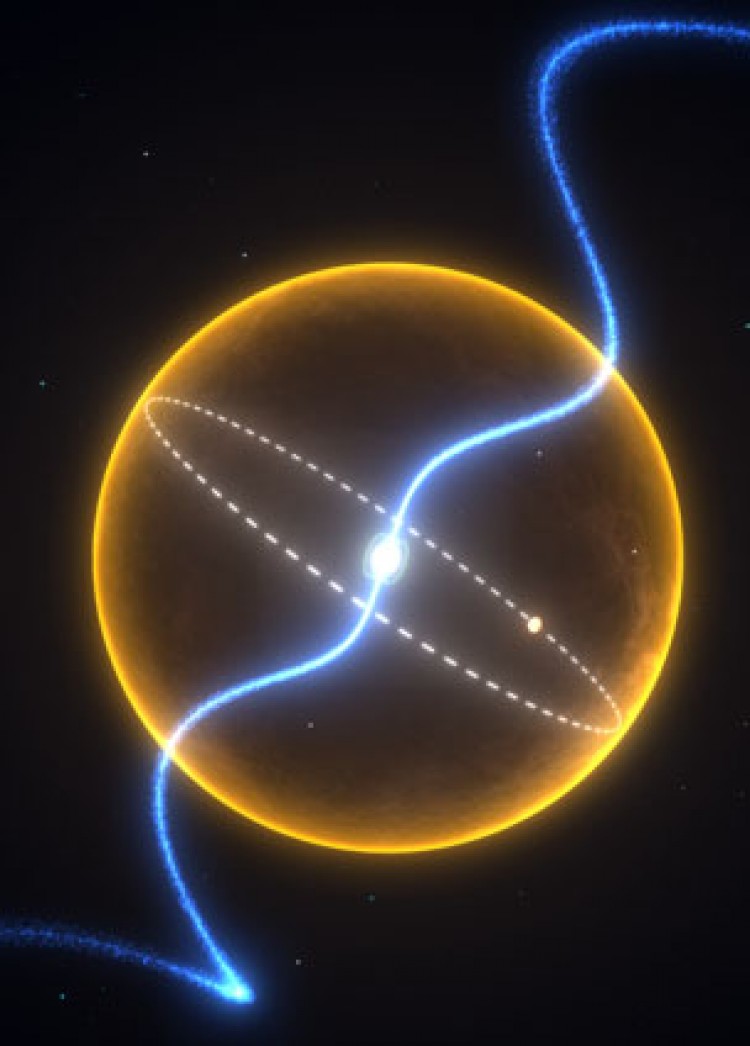Diamond Exoplanet Found Circling Millisecond Pulsar
The densest known planet outside our solar system has been discovered orbiting a pulsar, and appears to be composed mostly of diamond.

PULSAR'S BEST FRIEND: Artist's conception of the binary system, showing the diamond companion orbiting its star - millisecond pulsar, PSR J1719-1438. Swinburne Astronomy Productions
|Updated:






